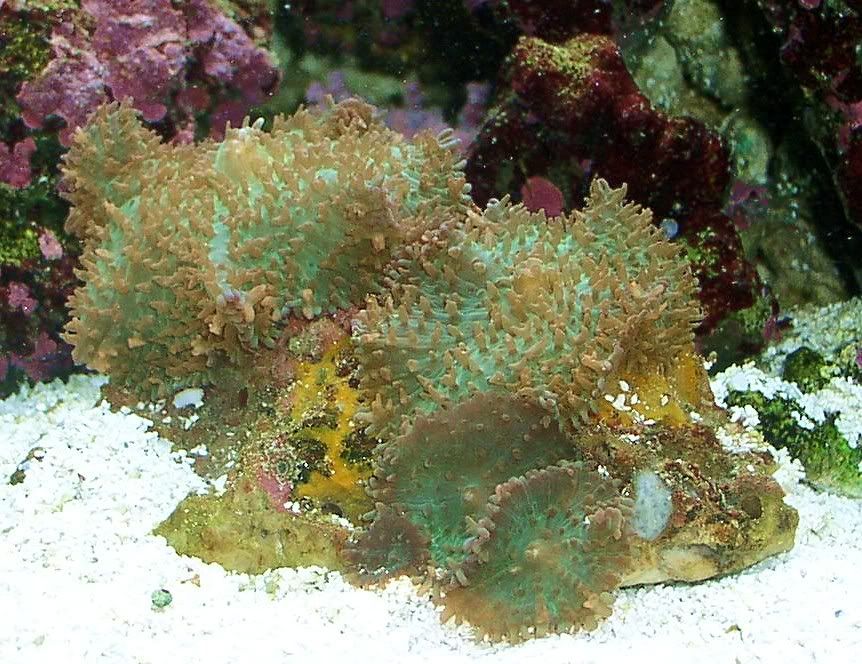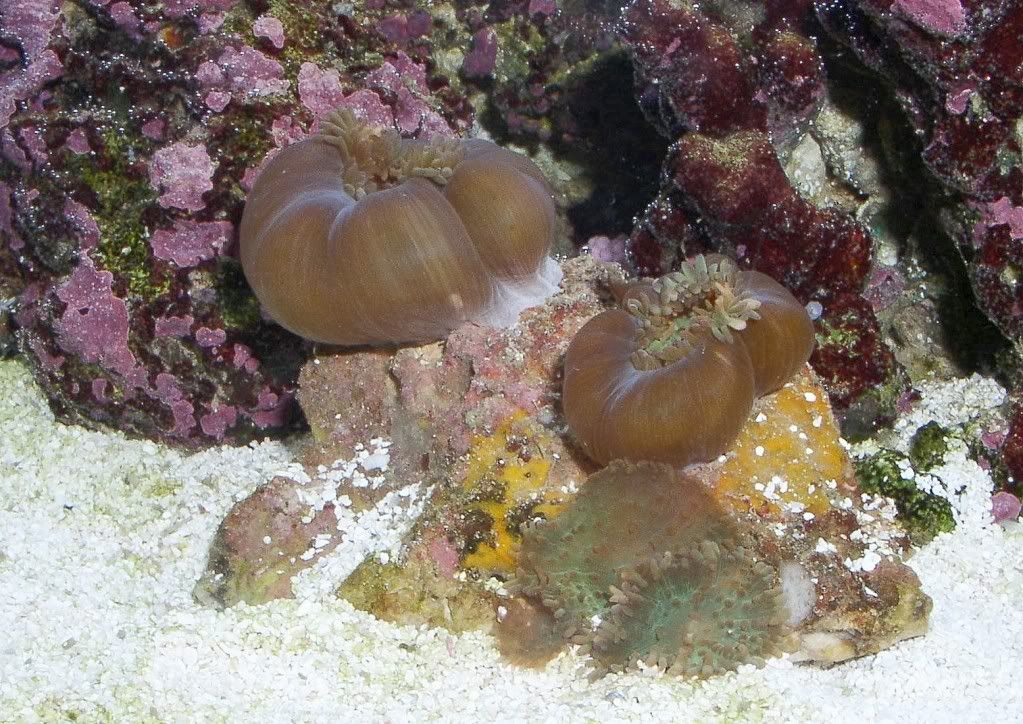Guess what. I have a response.
As per Eric Borneman
Corallimorpharians, also known as "mushrooms," are undoubtedly among the most interesting corals in nature. They are soft-bodied and lack external calcareous skeletons, despite being closely related to stony corals, the Scleractinia. They are oddballs, much as Heliopora coerulea (blue coral) and Tubipora musica (pipe organ coral) are soft corals that do produce an external calcareous skeleton. They are found in three or four families, and perhaps 13 genera, comprising an unknown number of species. Even genus-level identification is tenuous in this group.
Corallimorpharians are found in all oceans, from tropical to polar and shallow to deep waters. The most common types found in the aquarium trade are believed to belong to one of six genera: Actinodiscus, Rhodactis, Discosoma, Amplexidiscus, Psuedocorynactis and Ricordea. The beautiful Psuedocorynactis are not often available, but occasionally are found as hitchhikers on live rock, and individuals are commonly known as the orange ball corallimorph.
The single-polyped corallimorpharians are more recent in evolutionary history than the stony corals. This is interesting, because logically it would seem that selection would act to have corals produce skeletons as an adaptive measure. This probably did happen, prior to the Scleractinia, but at some point, a group of stony corals evolved that could survive well without a skeleton
More info I have acquired.
Corals have classically been identified by skeletal formations so it was thought if it did not have a skeletal formation is was not a coral. Fast forward to DNA testing and gene sequencers and you have a way for taxonomists to classify non-skeletal species. Carallimorpharians.
Carallimorpharians posses the same internal structure as stony corals but early hobbyists not seeing long predatory feeding tentacles felt they were not corals. It has come to pass that over time Carallimorpharians tentacles have been reduced to bumps or stubby protrusions and are not retractable.
Experts such as Borneman,Delbeek,Sprung,HortozmChung and many others consider the phylum Cnidaria corals so I am siding with the experts in the field
Coral Definition,quote to follow
""" Marine organism: a marine organism that lives in colonies and has an EXTERNAL skeleton. """ That is a prerequisite to being a coral.Many of the critters we all call corals really are not true corals.
The prerequisite for a coral having to live in a colony is out dated and wrong. There are many solitary corals
I am sure you have information by experts to the contrary of what I have posted and I eagerly await your post














